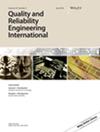稳态最优 EWMA 和 DEWMA 图表的比较
IF 2.8
3区 工程技术
Q3 ENGINEERING, INDUSTRIAL
引用次数: 0
摘要
双 EWMA(DEWMA)被认为是一种更有效的控制图表程序,可用于监控过程的平均值。对 DEWMA 和 EWMA 控制图进行比较,往往会发现 DEWMA 更优越,但这两种控制图使用的平滑常数相同,因此往往存在缺陷。我们采取的方法是,首先选择我们想要检测的移位,然后比较针对该特定移位的最佳 DEWMA 图表和最佳 EWMA 图表。我们考虑了平滑常数被限制为相同的 DEWMA 图表和一般 DEWMA 图表。我们发现,在某些情况下,最优 DEWMA 表的表现要好于一般 DEWMA 表,即对于固定的控制内平均运行长度(ARL)而言,最优 DEWMA 表的失控平均运行长度(ARL)更短,但改善幅度很小。当实际偏移量与优化图表时使用的偏移量不同时,最优 EWMA 图表的性能通常比最优 DEWMA 图表好得多。DEWMA 图表在偏离优化时的移位时表现不佳、DEWMA 权重的非单调性以及 DEWMA 图表所需的额外计算量都表明,EWMA 是比 DEWMA 图表更好的总体选择。本文章由计算机程序翻译,如有差异,请以英文原文为准。
Comparisons of steady‐state optimal EWMA and DEWMA charts
The double EWMA (DEWMA) has been proposed as a more efficient control charting procedure for monitoring the mean of a process. Comparisons of the DEWMA and the EWMA charts, which often indicate the superiority of the DEWMA, are often flawed because the same smoothing constant is used in both charts. We take the approach of first selecting a shift that we would like to detect, and then compare the optimal DEWMA chart and the optimal EWMA chart for that particular shift. We consider the DEWMA chart whose smoothing constants are restricted to be the same and the general DEWMA. We find that there are situations where the optimal DEWMA outperforms, in the sense of a shorter out‐of‐control average run length (ARL) for a fixed in‐control ARL, but the improvement is slight. The optimal EWMA chart usually performs much better than the optimal DEWMA chart when the actual shift differs from the shift used to optimize the chart. The poor performance of the DEWMA chart away from the shift for which it was optimized, the nonmonotonicity of the DEWMA weights, and the additional computations required of the DEWMA chart indicate that the EWMA is a better overall choice than the DEWMA chart.
求助全文
通过发布文献求助,成功后即可免费获取论文全文。
去求助
来源期刊
CiteScore
4.90
自引率
21.70%
发文量
181
审稿时长
6 months
期刊介绍:
Quality and Reliability Engineering International is a journal devoted to practical engineering aspects of quality and reliability. A refereed technical journal published eight times per year, it covers the development and practical application of existing theoretical methods, research and industrial practices. Articles in the journal will be concerned with case studies, tutorial-type reviews and also with applications of new or well-known theory to the solution of actual quality and reliability problems in engineering.
Papers describing the use of mathematical and statistical tools to solve real life industrial problems are encouraged, provided that the emphasis is placed on practical applications and demonstrated case studies.
The scope of the journal is intended to include components, physics of failure, equipment and systems from the fields of electronic, electrical, mechanical and systems engineering. The areas of communications, aerospace, automotive, railways, shipboard equipment, control engineering and consumer products are all covered by the journal.
Quality and reliability of hardware as well as software are covered. Papers on software engineering and its impact on product quality and reliability are encouraged. The journal will also cover the management of quality and reliability in the engineering industry.
Special issues on a variety of key topics are published every year and contribute to the enhancement of Quality and Reliability Engineering International as a major reference in its field.

 求助内容:
求助内容: 应助结果提醒方式:
应助结果提醒方式:


